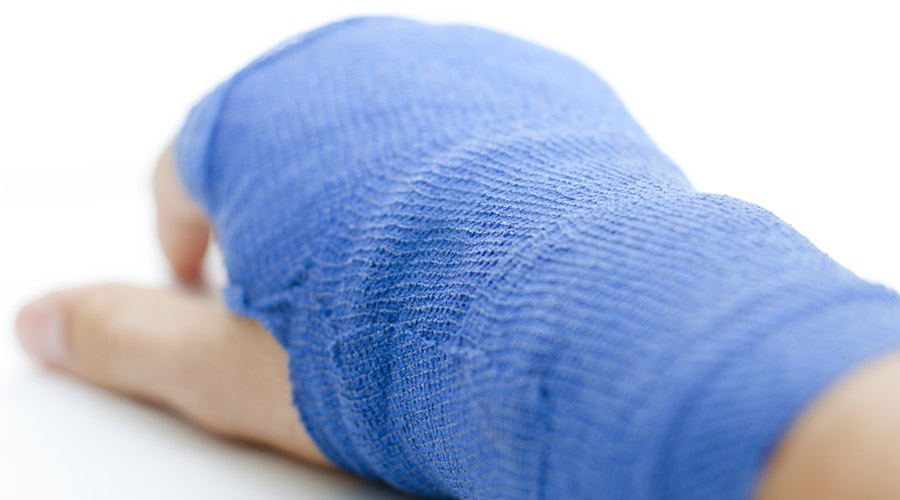Burns to hands run from minor to life-altering

Individuals who are exposed to high temperatures or flames and those who must handle flammable liquids are at increased risk for burns of the hand and wrist. Burns are most frequently sustained at home (72%), whereas 5% occur in relation to motor vehicle accidents and 9% are work-related, The most common type of burn injury to the wrist and hand is a scald injury, usually from a hot water source, followed by flame burns, flash burns from explosion of flammable gases or liquids, and contact burns.
Men and individuals between the ages of 17 and 25 are at the highest risk for burn injuries; approximately 70% of individuals with burn injuries are male.
Burns are described as first-, second-, third-, or fourth-degree based on the depth of tissue damage; burn injuries often result in a combination of burn depths. A first-degree burn affects only the topmost layer of the skin (epidermis) and causes redness without any blistering. Sunburn is an example of a common first-degree burn.
A second-degree burn, known as a partial-thickness burn, involves deeper layers of the skin and results in painful blisters. Superficial second-degree burns often result from scalds. These burns may be very painful, but they generally heal in 2 to 3 weeks without scarring. Deeper second-degree burns often result from contact with flames, or with hot oil or grease.
Third-degree burns are known as full-thickness burns. They affect the all layers of the skin and also the layer of tissue below the skin (subcutaneous tissue). Third-degree burns often are very pale and cause little pain at first, since all nerve endings have been destroyed. These burns may result from flames, scalds, chemical exposure, or electrical injuries. Individuals will develop significant scars and contractures of those joints involved in the injury.
Fourth-degree burns are extremely severe; these burns are third-degree burns that extend deeper into muscle and bone tissue. They sometimes cause the loss of fingers or hands.
Thermal burns are the most common burn of the wrist and hand. Thermal burns are due to exposure to hot materials such as liquids (scalds), flames (e.g., house fires), or steam (e.g., car radiators). Chemical burns occur as a result of exposure to acid or alkali chemicals or the deployment of automobile airbags.
Electrical burns are least common and occur when the body is exposed to an electric current. Injuries are sustained at points where the current enters, passes through, and exits the body. The most common sites of an electrical entrance wound are the hands and head. Fingers and hands may be destroyed by electrical injury. Electric current may arc from one object to another, such as from a wire to a hand tool, without entering the body. Such arcs produce flash burns, or thermal burns from brief high intensity heat.
Incidence and Prevalence: Each year, more than 2 million individuals sustain burns serious enough to seek medical care, with up to 100,000 requiring hospitalization and 25% resulting in significant disability.
Source: Medical Disability Advisor
Looking for a reprint of this article?
From high-res PDFs to custom plaques, order your copy today!








